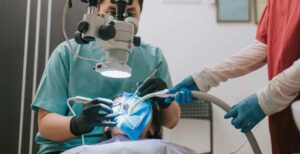Pew Charitable Trusts Reports on Dental Therapy’s Continuing Growth and Positive Impact
The Pew Charitable Trusts, a nonprofit organization dedicated to improving public policy and encouraging civic life in the United States, reports that even during a challenging year for oral healthcare due to the global pandemic, dental therapy has continued to expand its reach across the US.

The Pew Charitable Trusts, a nonprofit organization dedicated to improving public policy and encouraging civic life in the United States, reports that even during a challenging year for oral healthcare due to the global pandemic, dental therapy has continued to expand its reach across the US. The organization noted some impressive accomplishments. For instance, the first dental therapy education program received accreditation from the Commission on Dental Accreditation (CODA). The honors go to Iļisaġvik College in Utqiagvik, Alaska. The dental therapy program at Vermont Technical College in Randolph Center is expected to apply for CODA accreditation early this year. Dental therapy also expanded in Maine and Michigan with new legislation passed regarding each state’s licensure of dental therapists.
Finally, two research studies, one published by Pew and the other appearing in the Community Dental Health Journal, found that dental therapy offers myriad benefits to patients, practices, and underserved populations. The Pew study looked at dental therapists working in Minnesota, finding that practices employing dental therapists saw increases in the number of patients seen, services provided, and gross revenues. The study published in the Community Dental Health Journal evaluated the impact of dental therapists in Alaska’s Yukon-Kuskokwim Delta region. Results showed that the implementation of dental therapists significantly reduced the number of emergency department visits for oral health problems.
From Dimensions of Dental Hygiene. February 2021;19(2):11.

